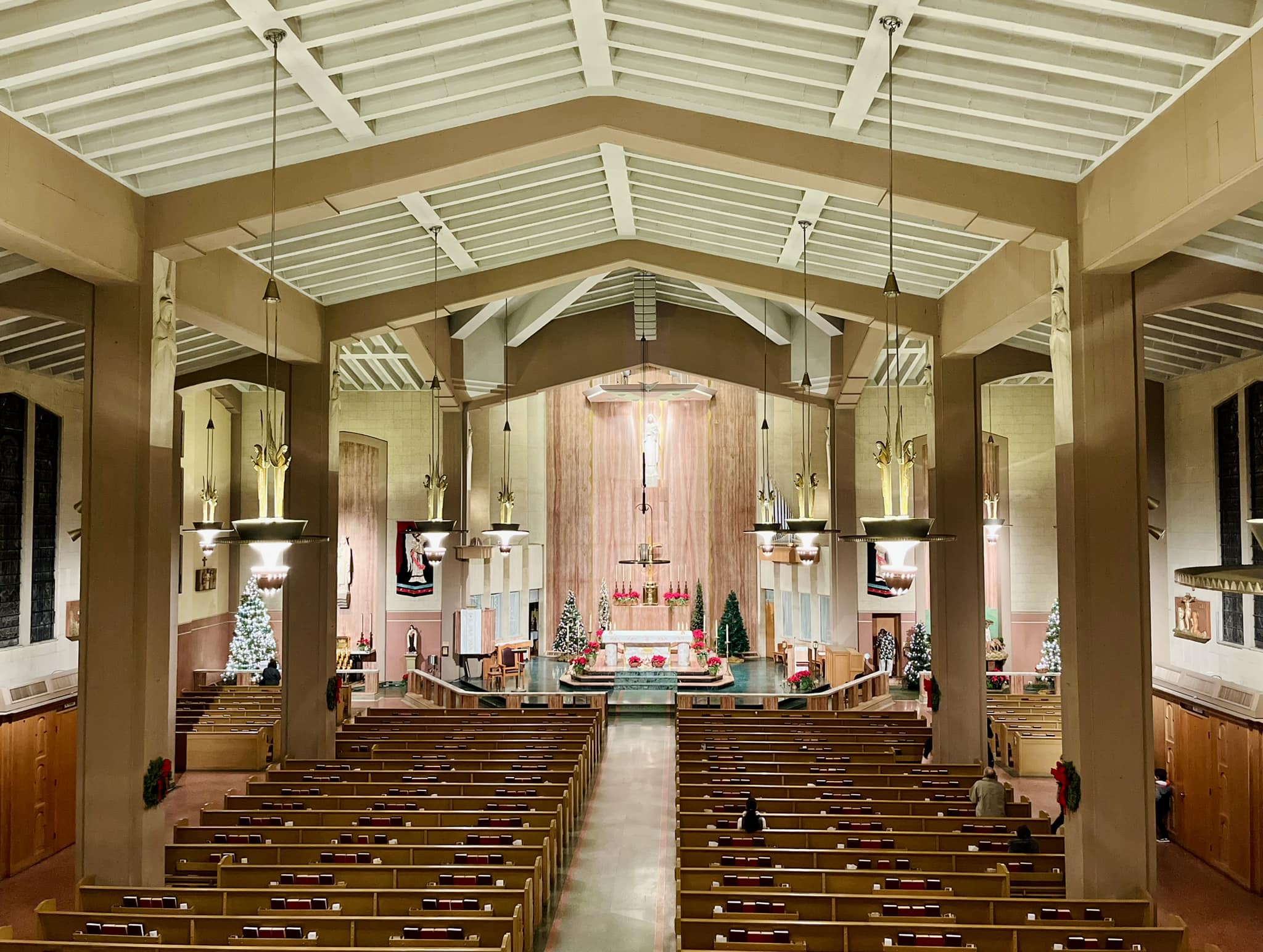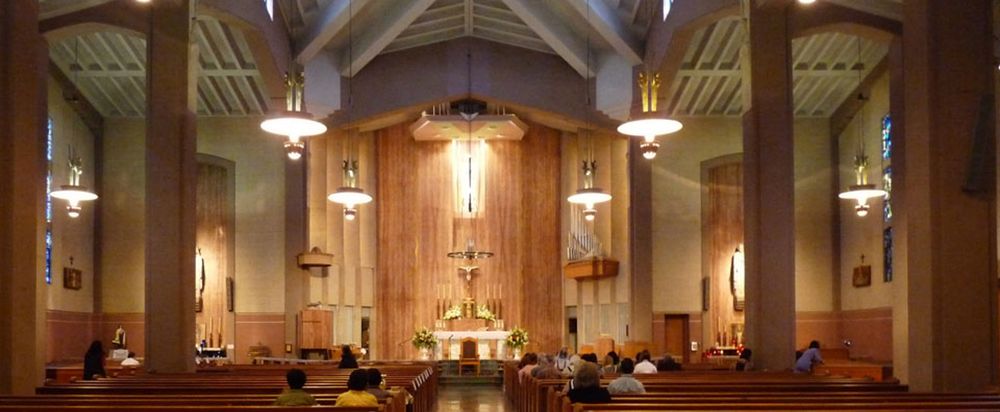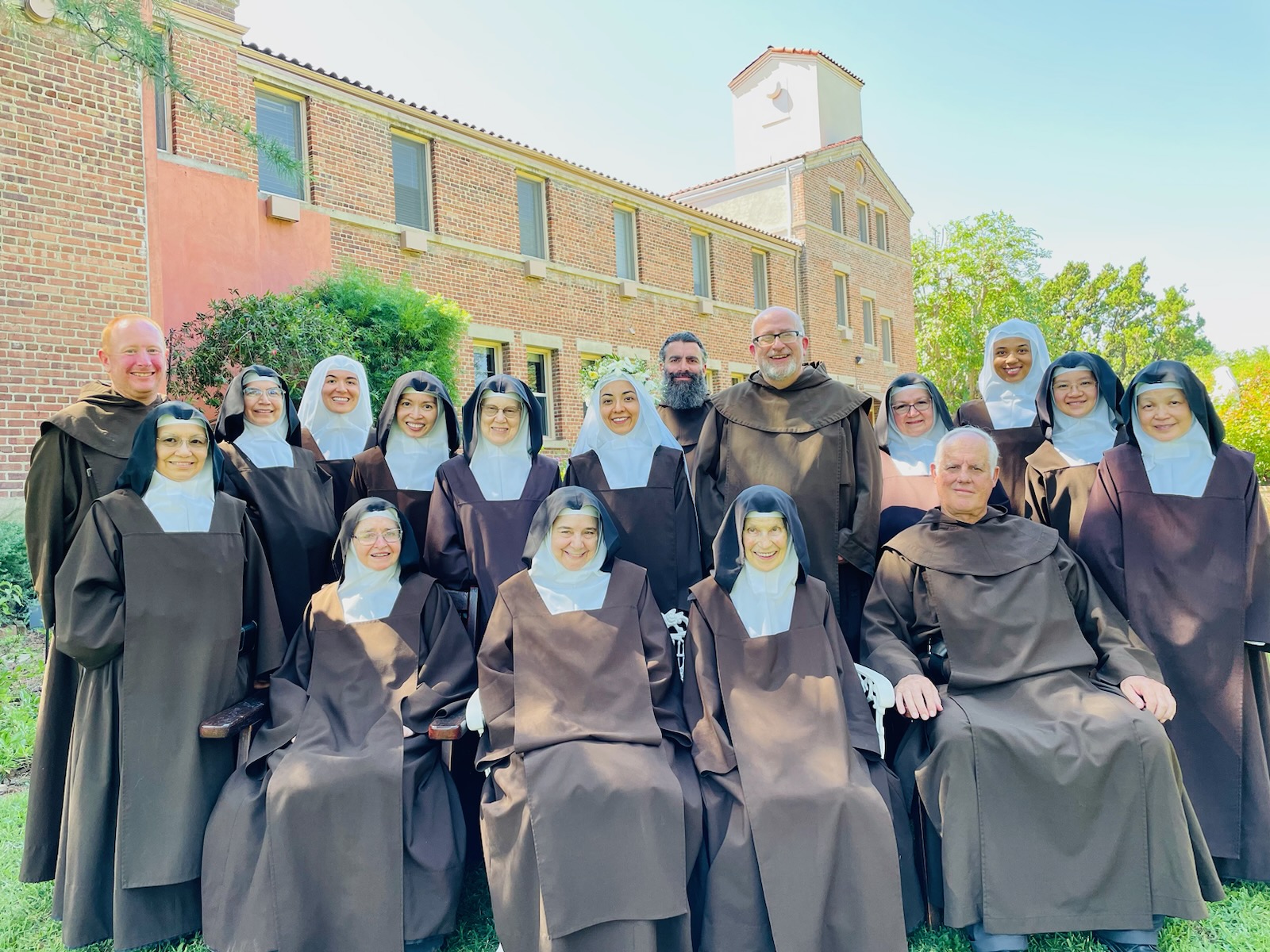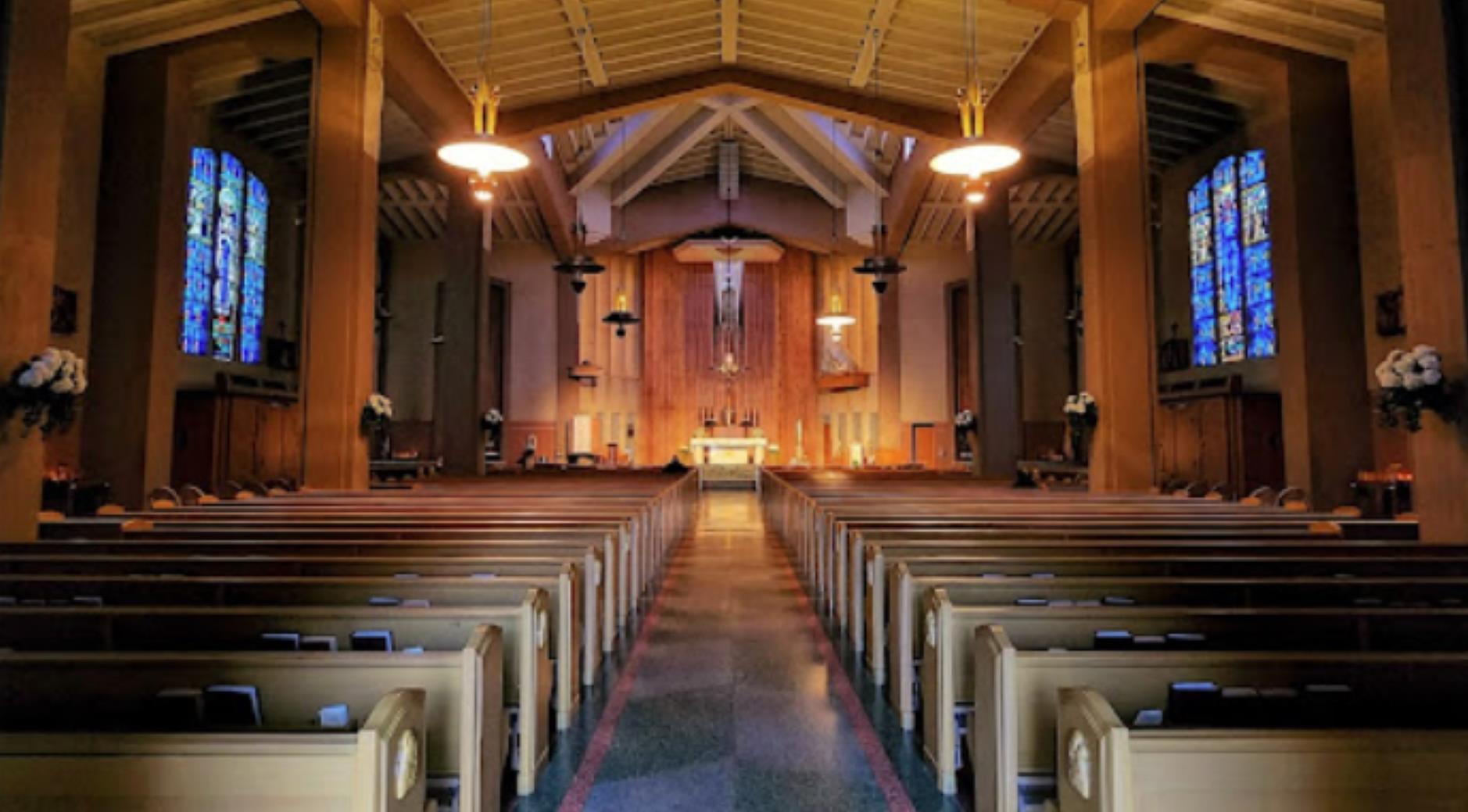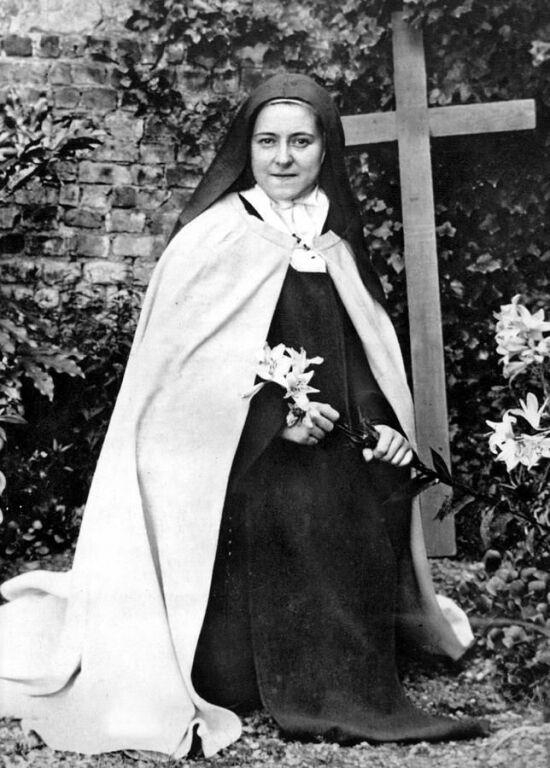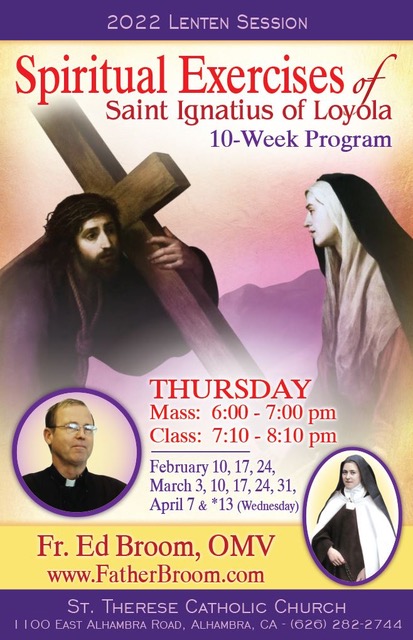DIVINE MERCY SUNDAY (APRIL 27)
3:00 TO 4:00 P.M.

Click the link to enlarge
SIGN UP TO PARTICIPATE IN THE EUCHARISTIC PROCESSION (5/17)
BEGINS AT 5:00 PM AT ST. PHILIP
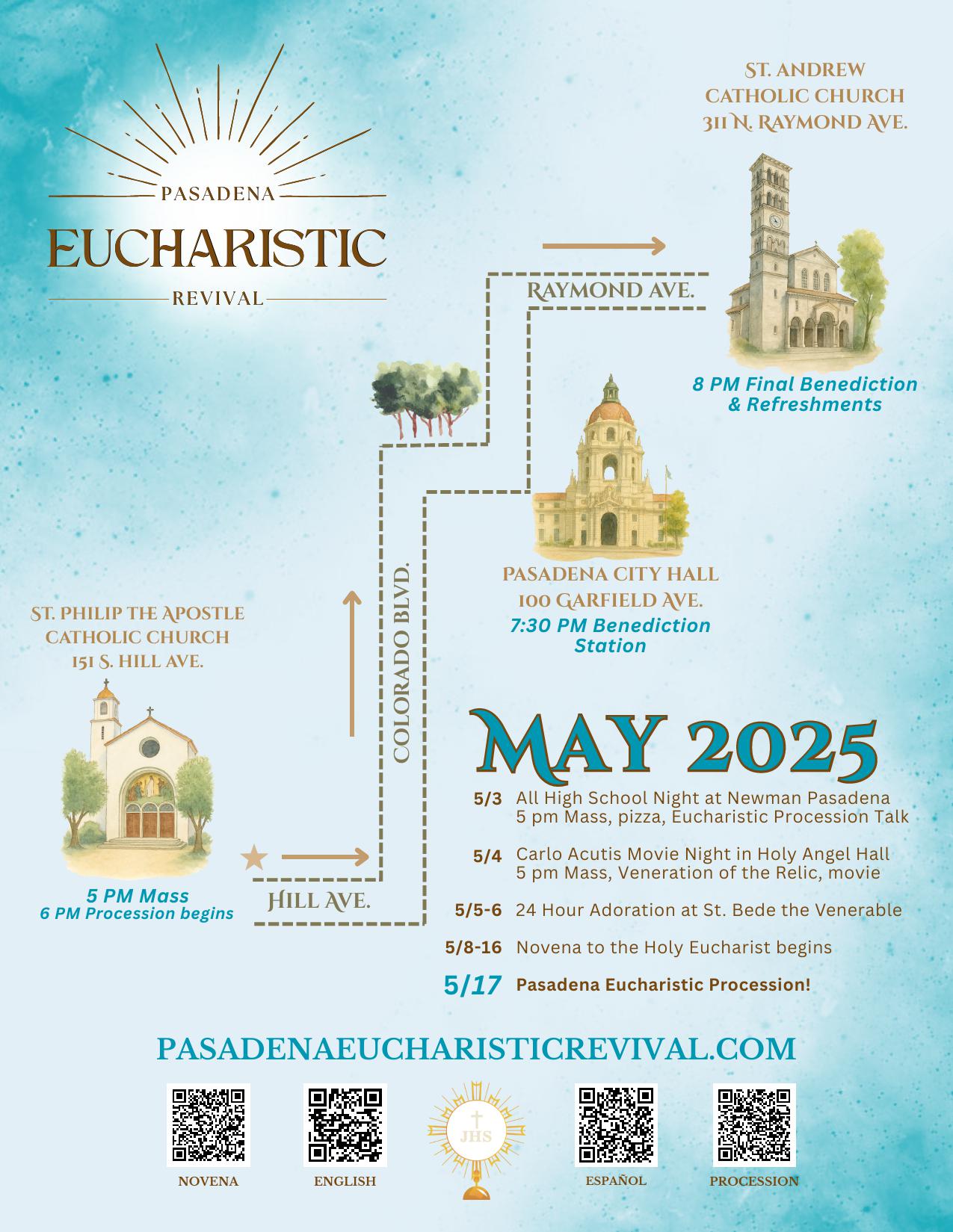
Click the link below to open
Events in the Parish | News | Videos
News
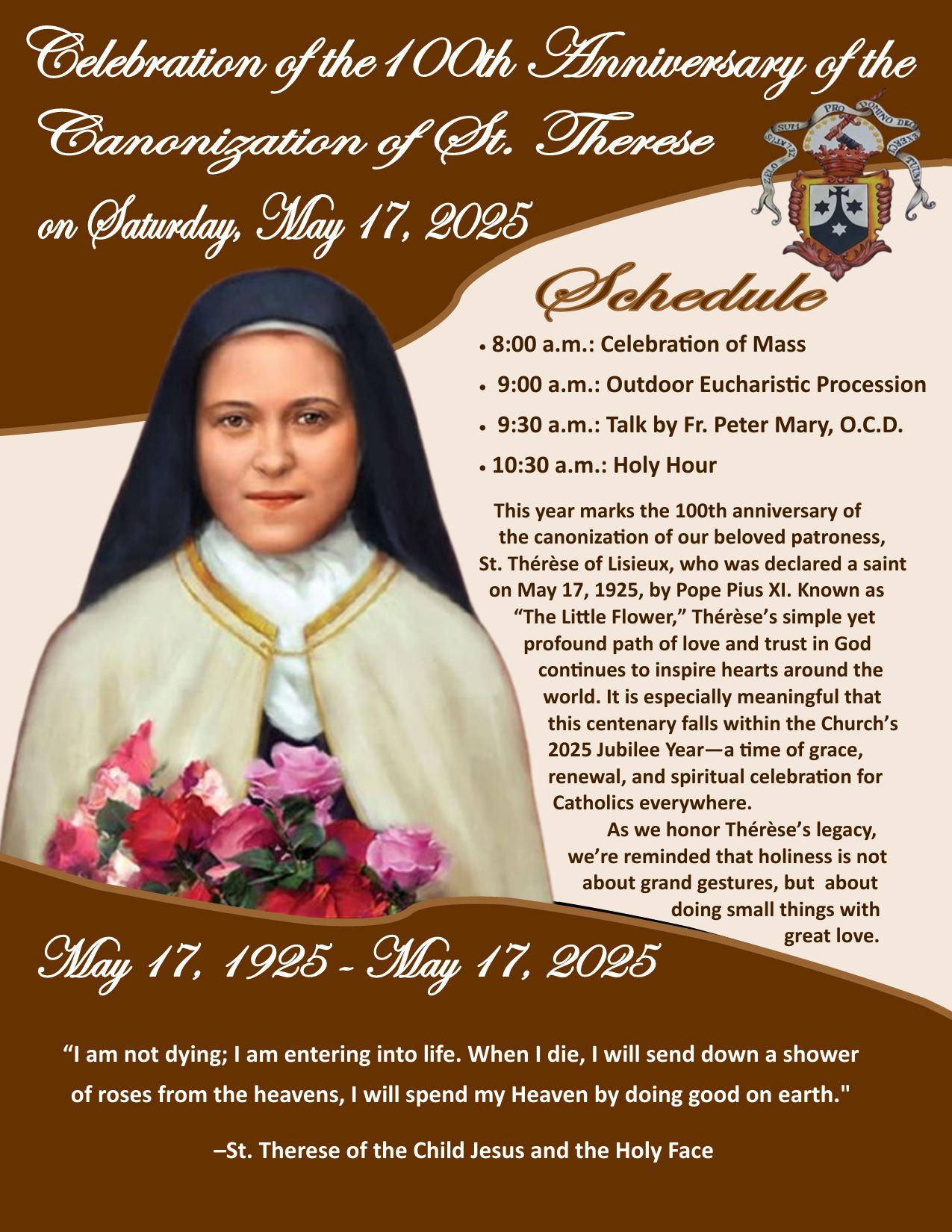
Join us on Saturday, May 17, 2025, to celebrate the 100th anniversary of the canonization of our patroness. Here is the schedule: 8:00 a.m.: Celebration of Mass 9:00 a.m.: Outdoor Eucharistic Procession 9:30 a.m.: Talk by Fr. Peter Mary, O.C.D. 10:30 a.m.: Holy Hour This year marks the 100th anniversary of the canonization of our beloved patroness, St. Thérèse of Lisieux, who was declared a saint on May 17, 1925, by Pope Pius XI. Known as “The Little Flower,” Thérèse’s simple yet profound path of love and trust in God continues to inspire hearts around the world. It is especially meaningful that this centenary falls within the Church’s 2025 Jubilee Year—a time of grace, renewal, and spiritual celebration for Catholics everywhere. As we honor Thérèse’s legacy, we’re reminded that holiness is not about grand gestures, but it is about doing small things with great love.
Fri Apr 25 06:28 PM

Fr. Stephen’s next class in this series will be on Tuesday, May 13, from 7:30 to 9:00 p.m. in the Parish Meeting Room. The topic will be THE CHURCH AND THE ACTS OF THE APOSTLES..
Fri Apr 25 06:14 PM

You are invited to come to the church for a weekly Holy Hour of Reparation to the Sacred Heart of Jesus EVERY FRIDAY from 5:00 to 6:30 p.m.
Tue Mar 11 11:55 AM

Deus Vocat would like to thank the St. Therese Parishioners for supporting Deus Vocat's Fundraiser
Tue Mar 11 11:46 AM


